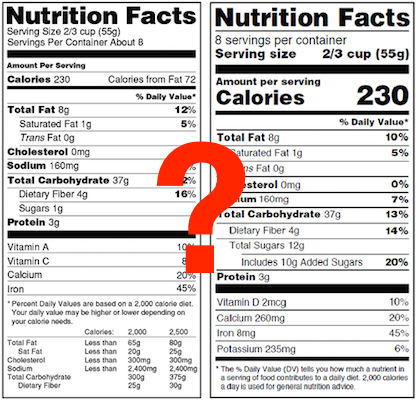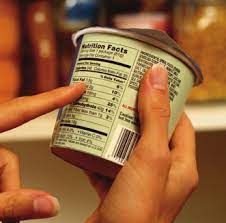The Importance of Inventory Management
Remember the last time you actually looked at QuickBooks? Probably not. Remember the last time you worried about the amount of cash in your bank account? Umm, yesterday?
Don’t worry if you answered yes to that last question. We’ve met hundreds of food producers who are in the same situation. It’s often the case that food producers know how to make scrumptious food (and sell it!), but they are clueless when it comes to the financial health of their business.
You see, many food business accounting systems are absolute chaos - that is if you have a system at all. It quite often falls to the bottom of an entrepreneur’s to-do list. We get it - you want to make and sell more product. But, it’s important to take control of your finances from the start. Why? Because understanding the impact your purchases have on your cash and inventory management helps you run a healthier business, see the future, and maybe even take on some outside investment. As they say on Shark Tank, you’ve got to know your numbers!
The chaos of trying to understand the financial health of your business often leads to stress – how much money is in my account? Where did all my money go? Do I have enough money to produce another run of product?
These questions paralyze many small business owners. Fear not. The answers often lie in inventory management, and this article is all about inventory management - from ingredients to finished goods and how it all impacts your cash flow and financial health. We promise, we’ll explain as much as we can, but note that it’s always a great idea to work with a local accountant and/or bookkeeper to help take the pressure off you when it comes to managing the numbers.
What is Cash Management?
Loosely defined, cash management is the collection, handling, and usage of cash. That means managing inventory, revenue, and expenses. Money in and money out. We’re pretty sure that some of you reading this probably have a degree from the school of hard knocks in cash management, without intending to do so! That’s because managing revenue and expenses is crucial to the financial health of your business and the foundation to company growth.
How cash moves in and out of your business.
If you’re looking at your bank account, thinking “where did all the money go?,” there’s a chance you spent it. In fact, that’s exactly what happened. You see, when you purchase inventory (ingredients, jars, caps, labels, shipping boxes, etc), you spend money. If that inventory doesn’t turn back into cash, it sits there, potentially becoming a worthless asset.
Let us explain with an example. First up, purchasing!
We’ll assume you have $10,000 to bring your spice rub to store shelves. It’s got garlic powder, salt, pepper, Italian seasonings, and other spices. To get your costs down, you order a pallet of each ingredient, three pallets of tin containers, and 10,000 labels (you were feeling optimistic!). All of those purchases have costs:
- Ingredients: $3,000
- Containers: $2,500
- Shrink Bands: $250
- Labels: $1,250
You haven’t made a single unit yet and you’ve already spent $7,000. $3,000 left.
In that same time period, you still have other expenses: rent, production help, permits, festival fees, online store payments, shipping supplies, etc. This takes more of your cash away. Now, you have $800 left.
Next, you produce 2,400 units this month to sell to a retailer who wants to test the product in a couple stores before a wider roll-out.
Let’s say your ingredients and packaging for those 2,400 units costs $0.58/unit (let’s assume $0.42/unit for labor, bringing your COGS to $1.00). 2,400 units x $0.58 in ingredients and packaging means you’ve used $1,392 of your raw materials inventory. You still have $5,608 tied up in raw materials inventory.
Now the Sales
If you priced your product correctly (ReciPal's costing tool can help with that), you should be selling your spice rub for about $2.86/unit, generating sales of $6,864 and a gross profit margin of $4,464 ($6,864 sales - $2400 COGS). Assuming an industry standard 15% net profit margin, you have $1,029 left over from these sales to help you produce product and keep your business running. Keep in mind, you probably have net 30 terms which means you won’t get paid for 30 days (if you’re lucky).
Sales went well this month, though. Your retailer testing the product wants 500 cases. Another distributor wants in for 500 cases because of your presence in this regional retailer. Plus, a great PR hit generated 100 cases through your website. Now, you have to make 1,100 cases to meet this month’s orders. You’re growing!
And the Cash Crunch
1,100 cases means 13,200 units, which means $7,656 in ingredients and packaging, plus $5,544 in labor. But, wait. You only have $800 in the bank! That’s because you have $5,608 tied up in inventory and you’re waiting on a $6,864 check from last month’s order. You start to scratch your head. “I have $20,000+ in orders and only $800 in the bank. How is this possible?”
This, dear reader, is poor cash management. Not only do you need to generate profit on a per unit basis, but you have to manage your cash, inventory, and accounts receivable so you stay afloat. In this example, there was probably a combination of not having enough starting capital and purchasing too much raw materials inventory at a time. It may have been a bit more expensive per unit to purchase less, but then you'd still have several thousand dollars in the bank.
For many small business owners, they have thousands of dollars tied up in inventory. This is often why you see companies liquidate inventory; because it generates cash.
What have you learned from this example?
- You need to be well capitalized to weather down-periods, and sustain periods of growth (since you don’t get paid right away for sales to retailers).
- If your product is shelf-stable, we recommend at least a 3-month supply of finished goods. More on that later.
- Produce what you need, price correctly, and sell your little heart out. (Read on…)
So, what do you do if you find yourself in this situation? It’s simple: Sell Your Finished Goods Inventory.
It’s hard to sell ingredients, but it’s easy to sell finished products. The cycle goes like this: Sell –> produce more product -> sell that product –> produce more product. You’re constantly in this cycle as a food business owner. And it’s why you’ll be strapped for cash if you’re not diligent about managing your inventory. Not convinced? Being strapped for cash inhibits growth. No growth? Well, that’s a tough way to survive.
As you can see, inventory management is directly related to effective cash management. They go hand in hand. That means tracking your inventory is super important.
Optimizing Your Purchasing for Maximum Viability
We’ll be the first to note that inventory management is no exact science. Things change, but we’re going to give you a couple pointers for how to get on hand on your production needs and identify how much is too much when you start to purchase with the big boys. There's always a balance between lowering your ingredient costs and not having too much capital tied up in inventory (raw materials OR finished goods).
How much inventory should I buy?
The best answer is, it depends. Didn’t see that coming, did you? For businesses that produce fresh product everyday, operating on a weekly purchasing schedule can save time and money and keep products fresh. If you sell prepared foods, weekly is still an option, but by event could work too. For shelf stable products, we recommend a least a 3-month supply so you can focus on sales.
Of course, this comes with a caveat -- you should buy what you can afford. Your costs will be high in the beginning unless you’re incredibly well capitalized. As you grow your sales, your net profit should slowly grow, too. That means you can use your profits to invest in ingredients - but only if your production justifies it. We’ve heard many horror stories of companies trying to sell pallets of ingredients just to get cash to produce more product.
Do you have a rule of thumb for whether or not to purchase in bulk?
We’ll present 2 scenarios to you that will hopefully answer this question.
#1. If you have to spend $1,500 to drop your unit COGS $0.02, it’s generally not worth it. You have to give up a lot of cash. To recoup the cash, you’d have to sell 75,000 units to break-even on that purchase. Not a smart business decision. Use the $1,500 to market your products and make more money.
#2. You have to spend $650 to drop your unit COGS $0.15. This happened to Michael Adams when he owned Green Mountain Mustard. He bought vinegar to drop his costs significantly. That’s because he only needed to sell 4,300 units to break even on that purchase. Selling 3-4x that number annually, it was an easy decision to make. Plus, he profited on the purchase by selling vinegar to other food producers.
Generally, we recommend at least a $0.05 drop in COGS to justify the purchase. But, be careful. Spending thousands on COGS reductions leaves you with no cash to safely grow your business and stay cash flow positive. We like to stay under the $1,000 mark for COGS reductions.
What about you? How do you make the call? Let us know in the comments below and keep reading to learn more.
How do I forecast my sales to determine how much to produce?
When you produce on a whim, you end up with finished goods that don’t sell. If it doesn’t sell and expires, you will likely end up losing money by liquidating your product (an article in its own right). You want to avoid this at all costs, so base your production on sales history and forecast off that. Your accounting or inventory software will tell you how much of each product is selling. Our general rule of thumb is to look at last year’s data and increase the numbers by at least 10-15% so you have a buffer if sales increase (you can of course track growth as well to build that in). Plus, it might give you a break on the following month’s (or week’s) production if you overproduce a little bit.
We also look at product by product sales year-to-date as a percentage of total sales. To calculate this number, simply divide the units sold of a particular product by total units sold across all products. This gives you a rank and idea of how often production needs to happen with those flavors.
For example, If you have 8 flavors, it’s highly likely three of them sell really well and the rest don't sell quite as much (80/20 rule!). If that’s the case, produce a larger amount of your top 3 flavors and a smaller amount of the less-popular flavors (or maybe drop those altogether - we're fans of simplicity and focus). Of course, if you have one SKU, keep making what you’re making!
Side note: if you are brand new to this and don’t have a couple years of sales data to get an idea of what you need, the next best strategy is to make product and SELL it (aka turn cash into MORE cash) so you have an idea of what you’ll need in the future in terms of raw ingredients, packaging supplies, and cash to pay for the forecasted production. Better to start small and learn than to burn through a pile of cash.
All this talk about inventory management is making us hungry. Let's talk about how you can actually track your inventory. There are several viable options we’ll go through below. (We're leaving out the things that are technically options but are really bad ideas like having no tracking system at all or trying to do it by eyeballing.)
How to track inventory for your small food business
Option #1: Manual tracking with pencil and paper
Good ol’ pencil and paper works really well for some people! One way you could do it is to keep 2 notebooks or binders. One notebook keeps track of your ingredient inventory, and the other keeps track of your finished goods inventory (and lot-tracking of course).
For the ingredient notebook, draw a couple lines down the middle and list the ingredient, vendor, batch number, and date purchased. One page for each ingredient - repeat as needed.
For the finished goods notebook, you’ll want to keep track of how much product was produced and the date. Then set up an inventory check-in every day, week, or month - whatever works best for you. This is an opportunity to count and document your inventory-on-hand. This way, if you have a big order, you can get a rough idea if you have the stock or not.
While this sounds easy and helpful, there are two big downsides to manually tracking your inventory:
- Manual calculations. We hope you have a calculator. Subtracting every production run and adding in each ingredient purchase hurts our heads just thinking about it.
- No monetary value. This is hard to track, especially as prices fluctuate for your inventory and total COGS (Cost of Goods Sold).
So let’s address these downsides by using a computer to quickly and accurately track inventory.
Option #2: Spreadsheets - Microsoft Excel or Google Sheets
A lot of food business owners live in Excel. Especially those kind of obsessed with numbers (this author included!). It’s relatively easy to use and helps you automatically calculate inventory needs, cash costs, and more. Plus, if you use Google Sheets, you can access your inventory on the go through every screen. This is perfect for last-minute inventory checks before you order. However, there are a couple downsides here too:
- Every business is different: This means you have to create your own Excel spreadsheets from the ground up so that you create something useful for your business. And your business may change dramatically over time.
- Learning curve: You have to learn a lot of formulas, automation techniques, and even macros if you want. This can be complicated and often a pain to setup.
- Limited product lines: Excel is a great start for many small food business owners who have a couple products and under 20 ingredients. Anything more than that - like 20+ ingredients, multiple product lines, and more, and the tracking gets too complicated.
So if your business production is more complex, we highly recommended you move to an entry-level software like the ones mentioned below.
Option #3: Inventory Software - Entry-Level
We talked about inventory management software in our previous article, so we’ll just briefly mention them here. The great thing about these tools is that they automate a lot of the manual and customized Excel tracking in the previous two options. Look for software that integrates with other packages you use and your online distribution channels. Why? Because entering the same data in 2-3 places takes forever, and we’re pretty sure it's not on your list of your favorite things to do. We’ll let you make your own decision, but we’re obviously partial to ReciPal's inventory management software :)
Option #4: Inventory Software - Enterprise Resource Planning (ERP)
Looking for something that covers every moving detail as it relates to your food business? If you are, you’re going to want to look for ERP software. ERP stands for Enterprise Resource Planning and is typically meant for larger corporations north of $1 million in revenue. ERP is business process management software that allows you to use a system of integrated applications to manage your business and automate many back office functions related to technology, inventory, production, and human resources. This software is robust and often costs $20,000 or more just to get started and implement the software, and then the packages usually charge hefty monthly usage fees. Here is a breakdown of 10 ERP options if you’d like to look into them further.
Some Parting Inventory Management Words
There are a lot of options for tracking inventory that can work for every size and type of business. And, yes, you should be tracking inventory whether you produce in your house or in a large warehouse. The same cash management principles apply if you have $10,000 in annual sales or $10 million.
If you simply don’t have time (but you should make time), then we recommend at least getting a handle on your batch sizes so you know the ingredients you need to produce to demand.
We could go on and on about cash management for your food business. If you’re interested in learning more about accounting and inventory management, we’ll be writing a little more about it soon. There are also plenty of classes online that are super affordable or, even better, free:
Management Accounting: Cost Behavior, Management, and Analysis
Inventory Management: Using Inventory Models
Accounting for Purchase & Sale of Inventory (Perfect for the distributors out there)
Introduction to Management Accounting
Questions? Comments? Leave them below!






